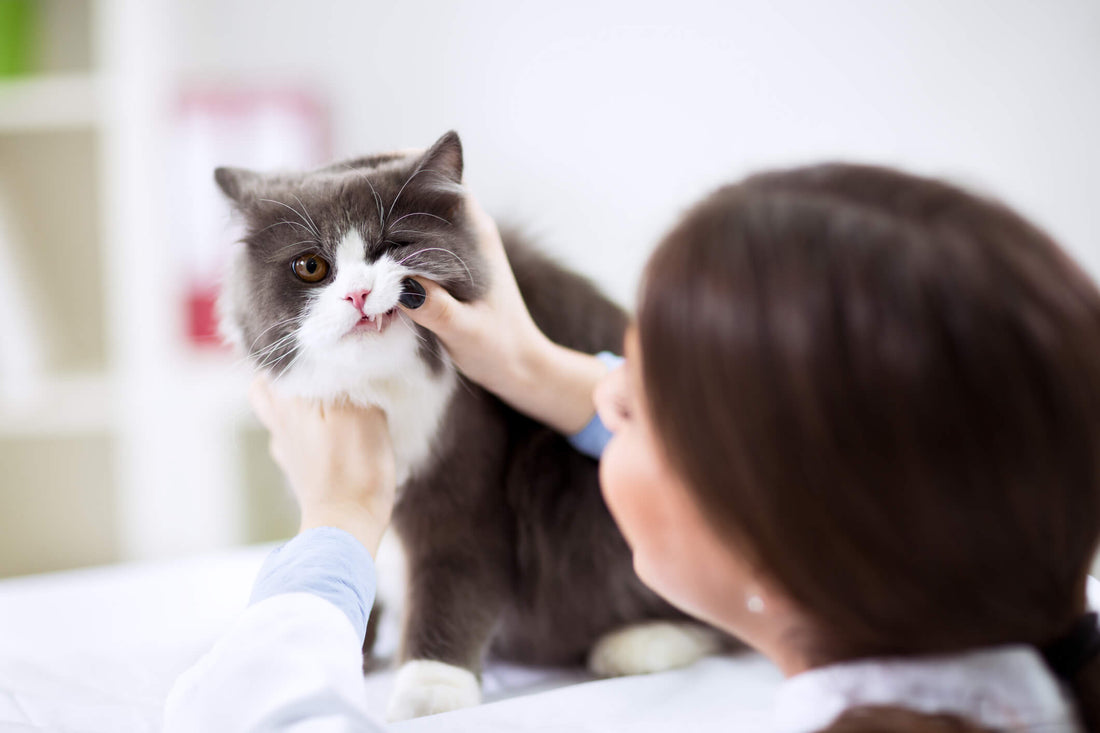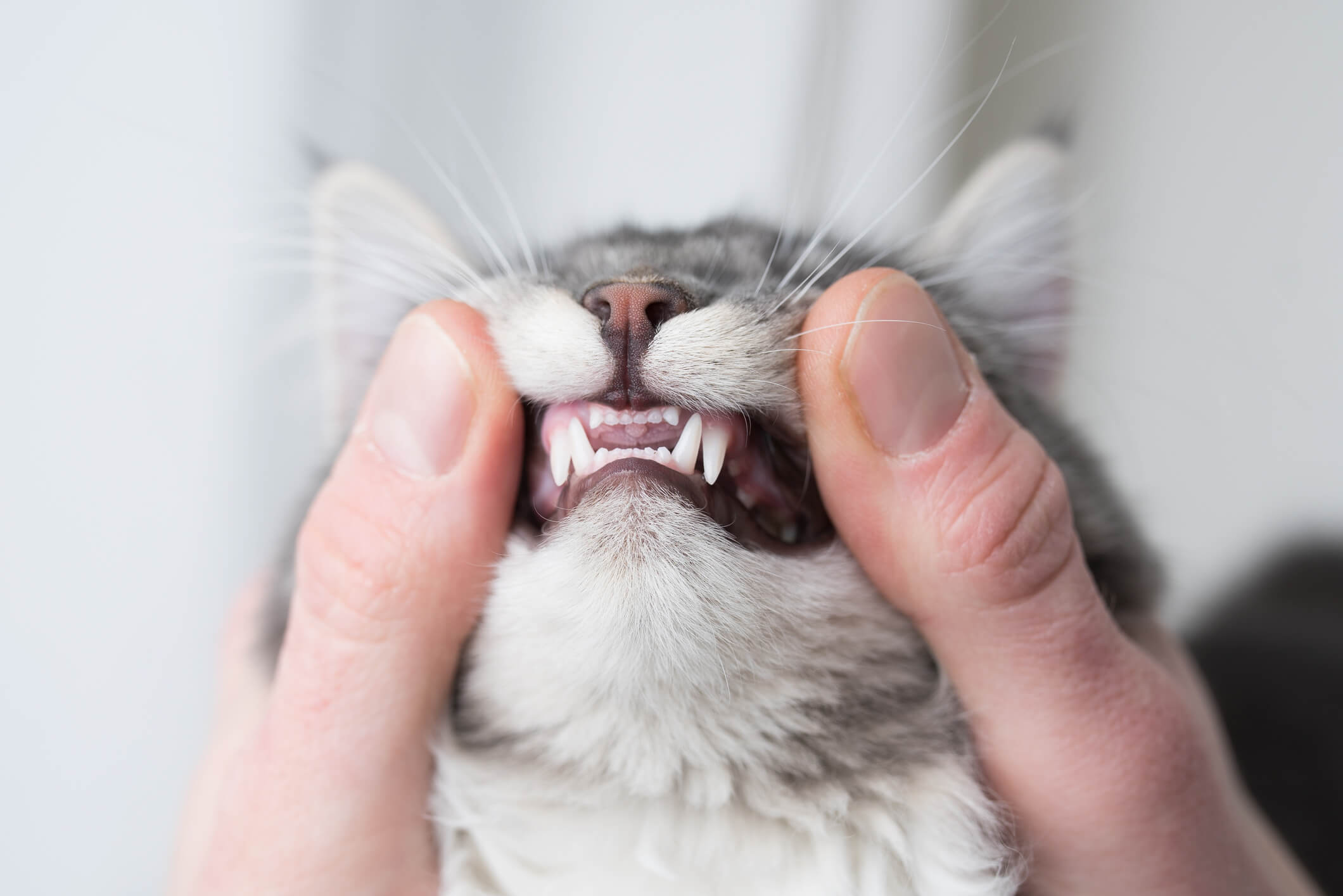
What Should You Do If Your Cat Loses a Tooth?
Every kitten goes through a teething process in their first year of life. Once your cat is fully grown, though, their teeth should stay firmly in their mouths.
If you discover that your adult cat has lost a tooth, it should immediately raise a red flag in your mind. Here’s what you should do about it.
When should cats lose their teeth?
Cat owners must distinguish between tooth loss that’s normal and when it’s cause for concern. Kittens go through a teething process that’s similar to human babies—the only difference being that kittens experience teething in a much shorter time span. At two to four weeks old, kittens will begin growing their set of milk teeth. They begin losing milk teeth around the four-month mark and should have all their adult teeth by nine months.
Owners should closely monitor the teething process in case complications arise. Gum inflammation, discomfort and even gingivitis are normal parts of the process and should clear up once teething is complete. However, owners should take note if milk teeth haven’t erupted by 10 weeks of age or if adult teeth are still missing after nine months.
Of course, oral disease can still occur in kittens if the teething process doesn’t go according to plan. Your kitty might have a retained deciduous tooth, which occurs when a milk tooth stays attached to the gum line. As a result, adult teeth are forced to crowd around it. Retained deciduous teeth are uncommon, and oral disease is much more likely to crop up among older cats.
Potential causes for lost teeth
Adult cats aren’t supposed to lose their teeth. Once the teething process is complete, your kitty will have the same set of pearly whites for the rest of their life. If your adult cat has lost a tooth, the cause is most likely due to an injury or gum disease. A vet can provide a proper diagnosis so you can move forward with treatment.
Adult cats may lose teeth if they’ve sustained an injury to the head. Injuries can occur from running into a hard object or getting into a scuffle with their fellow household pets. Briefly examine your cat right after traumatic incidents to see if they’ve been hurt. If they lose a tooth in the coming days, that scuffle was likely the cause.
Cats who are six years or older are most at risk for developing oral and gum disease. Periodontal disease occurs when plaque collects along the gum line and hardens into tartar. This is a yellowish-white substance that can’t be removed with everyday brushing. In severe cases, the tartar can completely separate the tooth from the gums due to damage and cause it to fall out. Periodontal disease takes a long time to develop and is the result of poor dental hygiene.
Missing teeth don’t always fall out, either. Sometimes, they disappear back into the gum line. Tooth resorption occurs when the dentin inside one or more teeth deteriorates beyond repair. The cat’s gums naturally begin to reabsorb the damaged teeth to prevent infection. With a partial resorption, you’ll still be able to see the point of the tooth above their gum line. In other cases, the tooth will completely disappear from sight. Tooth resorption can be painful for cats, so it’s important to keep an eye on and treat immediately.
Schedule a vet appointment right away

No matter the cause, the best thing owners can do when an adult cat loses a tooth is call the vet. There’s no good reason for a cat’s teeth to fall out once they’ve grown out of the teething phase. Take a quick look at your cat’s teeth every once in a while to make sure they’re in good shape and notify the vet if you detect any changes.
Unless you find the tooth yourself, you might not notice that your cat lost a tooth right away because cats excel at masking their discomfort. However, cats suffering from oral disease usually exhibit a change in behavior. They might refuse to eat or become slack-jawed if they’re dealing with a painful infection. Recognizing symptoms is the first step in getting your cat the help they need.
Treatment for tooth loss
After visiting the vet, you’ll receive instructions for at-home care while your kitty is on the mend. Vets often recommend a wet food diet that’s easy on swollen gums, especially if the cat is recovering from a partial tooth extraction. They’ll also have you closely monitor the healing process and report back with any concerns you may have. Once your cat has fully recovered, implement a daily diet of dry food and regular brushing to prevent future tooth loss.
While lost teeth in cats is far from normal, remember that your furry friend is going to be just fine. Seeking a vet the second you notice something’s amiss is key to minimizing your kitty’s discomfort and preventing the loss of additional teeth.


